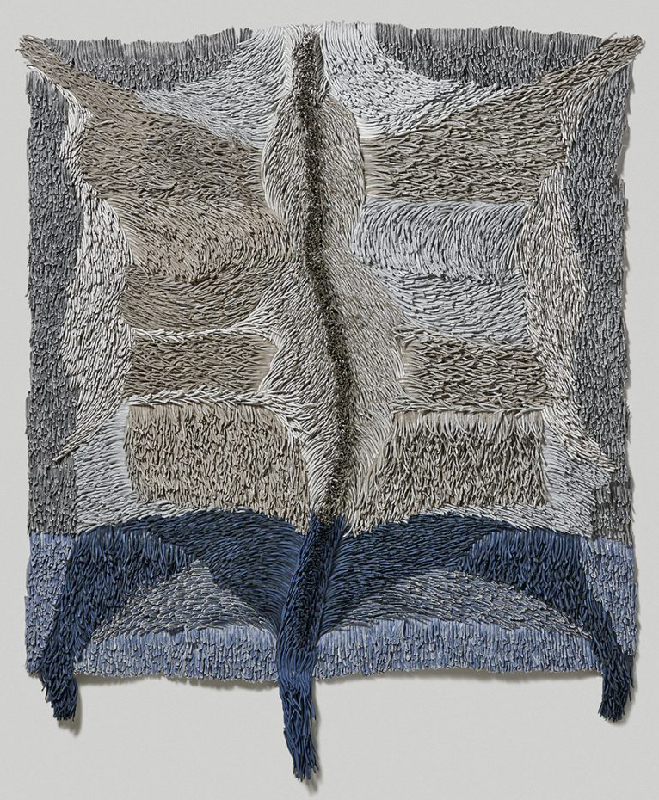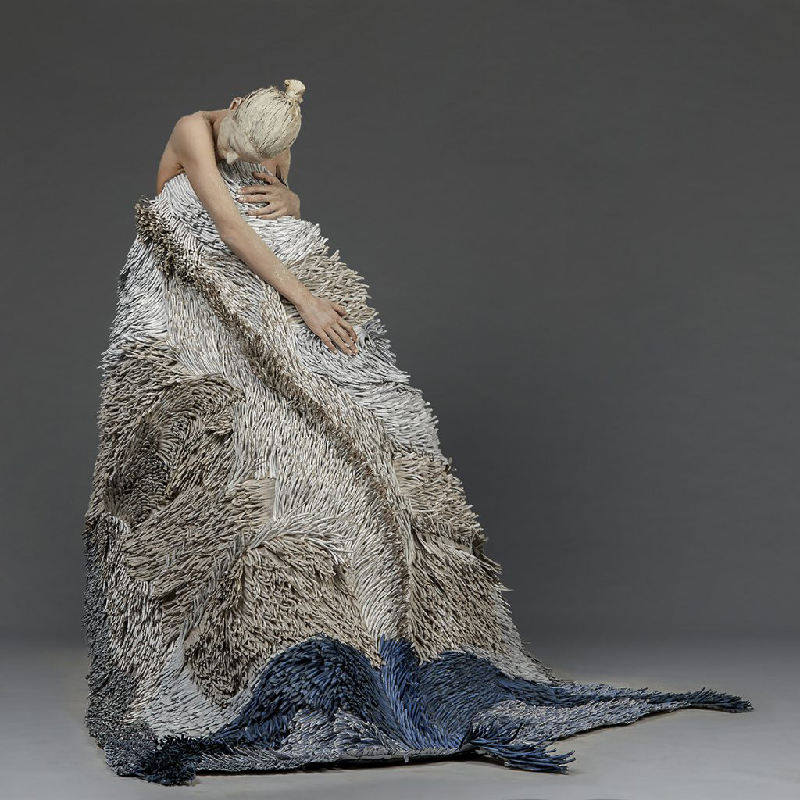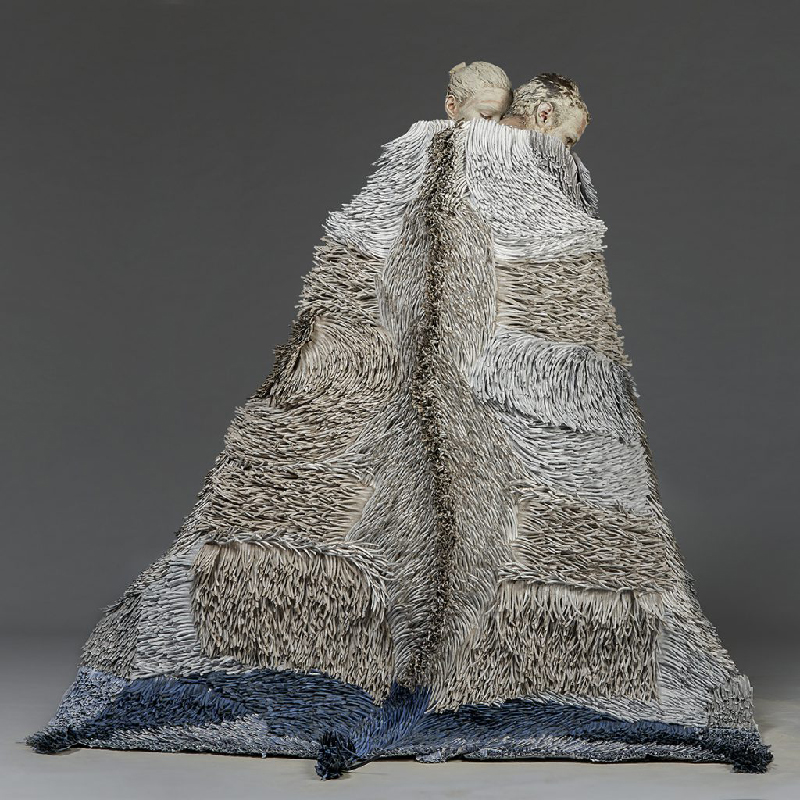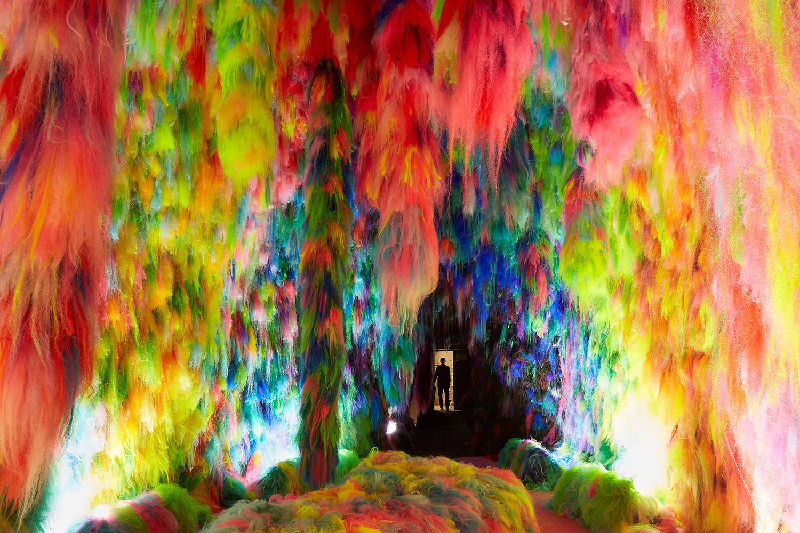
In this post I will show artists using textiles at the Venice Biennial. They were far less numerous compared to the last Biennial in 2017. The reason seems to be that the curator, Ralf Rugoff , wanted art to have an impact on society (politically), wheras Christine Macel did focused on diversity. This and the fact that she is female may have made her choise more textile! She was only the second female curator of the Venice Biennial ever!
Still there were some interesting textiles on view, especially in some of the national pavilions!
Hrafnhildur Arnardóttir/ Shoplifter: “Chromo Sapiens”; for me this was the most spectacular installation in Venice! This Icelandic textile artist did win the Nordic Textile Award in 2011 with a piece done in artificial hair. She still uses this colourful material that comes from China.
Her installation to represent Iceland, Chromo Sapiens is formed of three cave-like spaces, the first called “Primal Opus” with earthy dark colours. Sounds from the Icelandic cult band HAM are vibrating your body. The second cave “Astral Gloria” is a dome-like space with loud neon colours.(6) The third cave “Opium Natura”is like a garden of ethereal delights, an airy space where the colour palette is very bright.
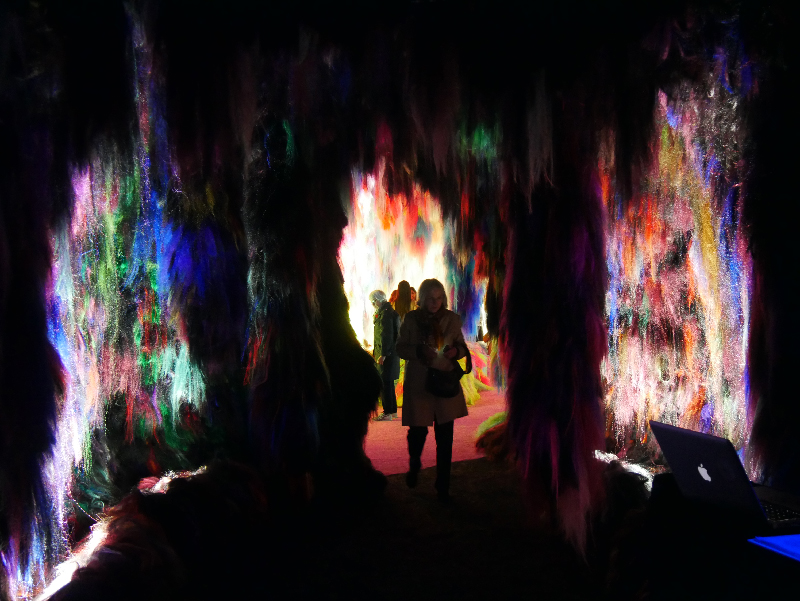
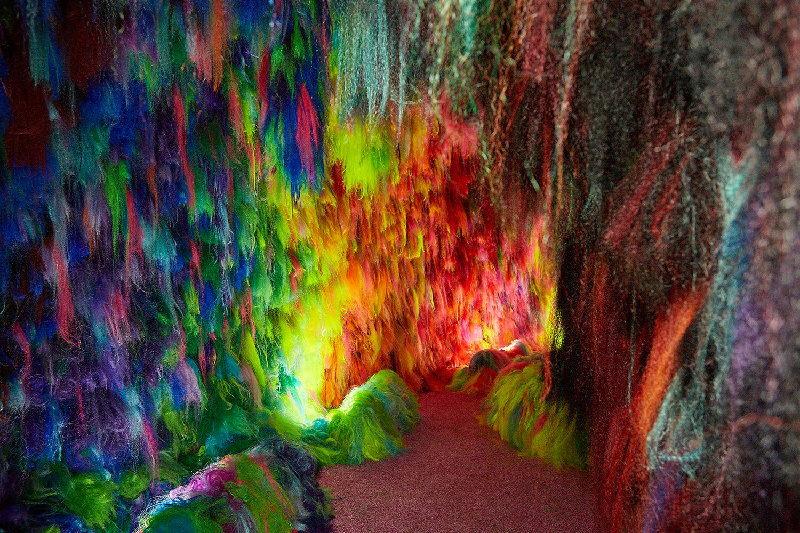
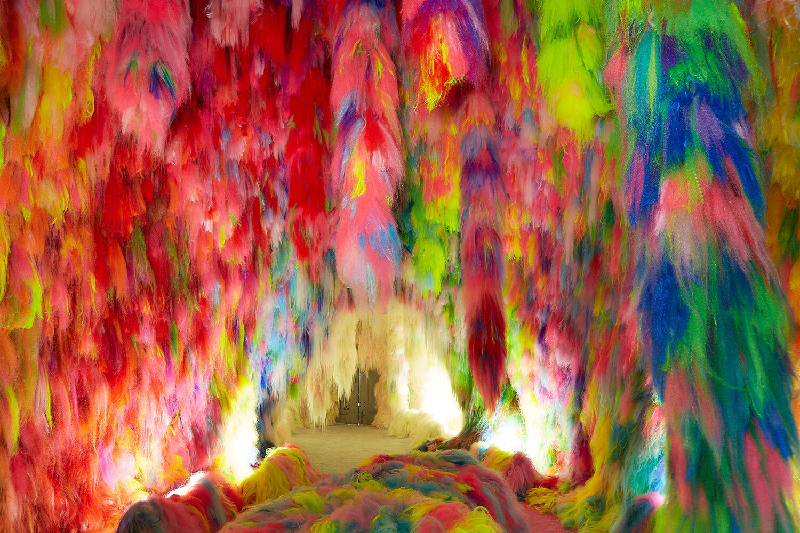
Ed Atkins: ” Good Food” 2017 – 2019. One of the many works using recyled textile material, but a work that I do not see as in any way favourable for the resurgence in textile: Fotos of people weeping against a background of old theater clothing, underscoring the absence of real life. Here textiles are just only theater backdrop
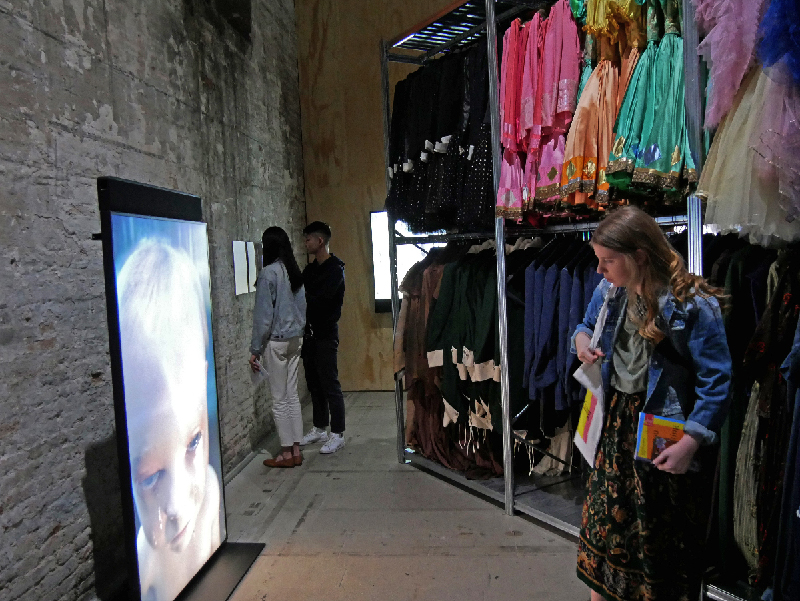
Yin Xiuzhen: Installation “Trojan ” 2016, steel frame, and again more used clothes.
I liked this one a little better! Since the early 1990s, Yin Xiuzhen has been working with recycled materials to create ambitious sculptures reflecting the excessive development, consumption and globalisation in post-1989 China. But his work was also not very important for textiles.
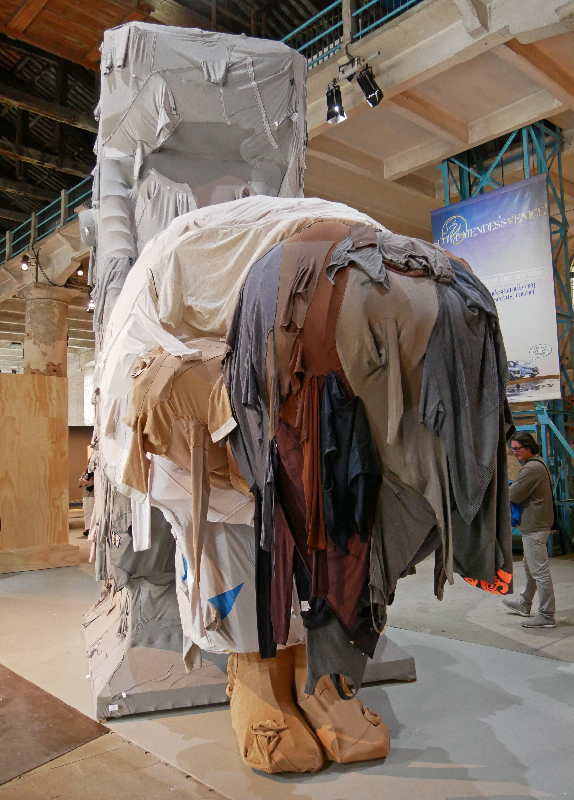
Jimmie Durham: In his sculptural series dedicated to the last mammals in Europe – many of them on the verge of extinction – Jimmie Durham recalls the non-humans that share the continent wih us. Each scupture is made from combinations of furniture parts, industrial material and used clothes. Allthough not important for textiles these works were very impressive and touching. Jimmy Durham did get the Golden Lion for his life work
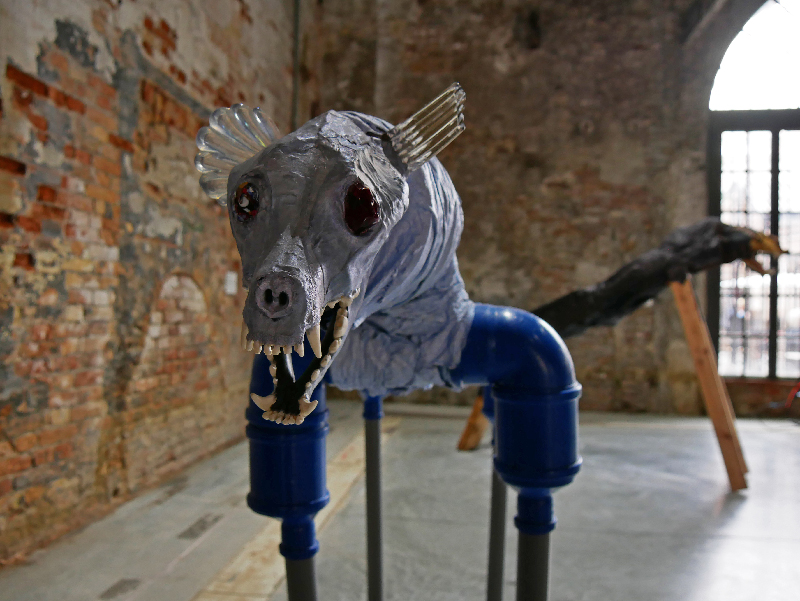
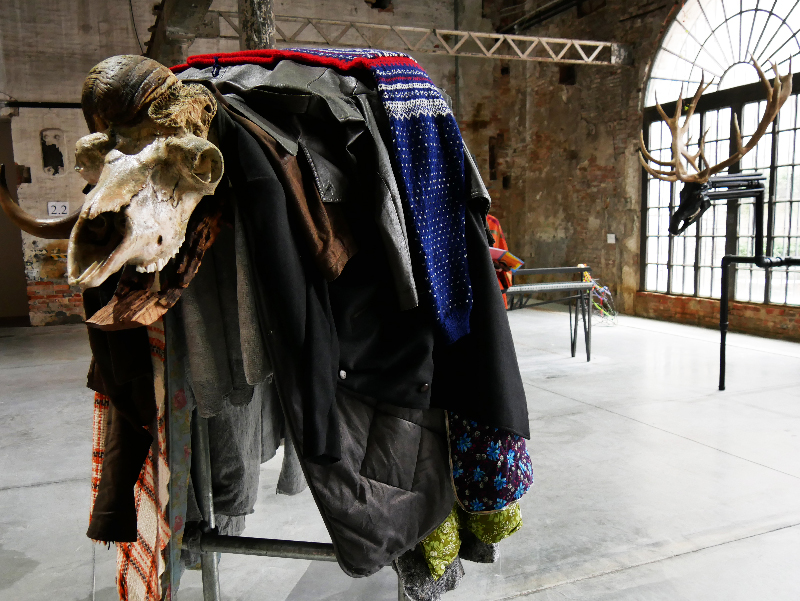
Jamie Cameron:”Smiling Disease”, 2008. The folk tradition of the Perchten, an
Alpine winter character, is the inspiration for this installation. Commissioned from an Austrian craftsman, these grotesquely grinning carved wooden masks reference the collection of tribal artifacts that were so popular among surrealist artists in the early 20th century. The name of the craftsman was not mentioned! A typical slip for fine art people who do not consider the process of making as important enough. I do see this as a blunder
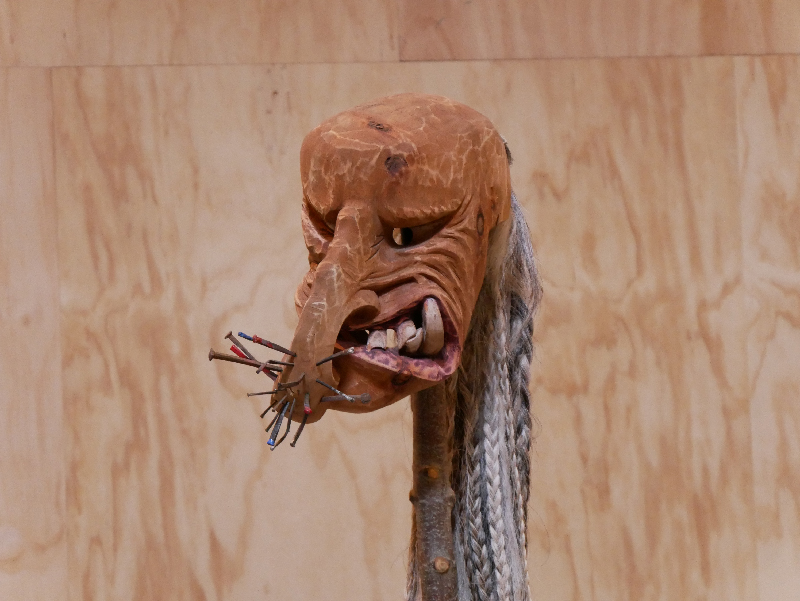
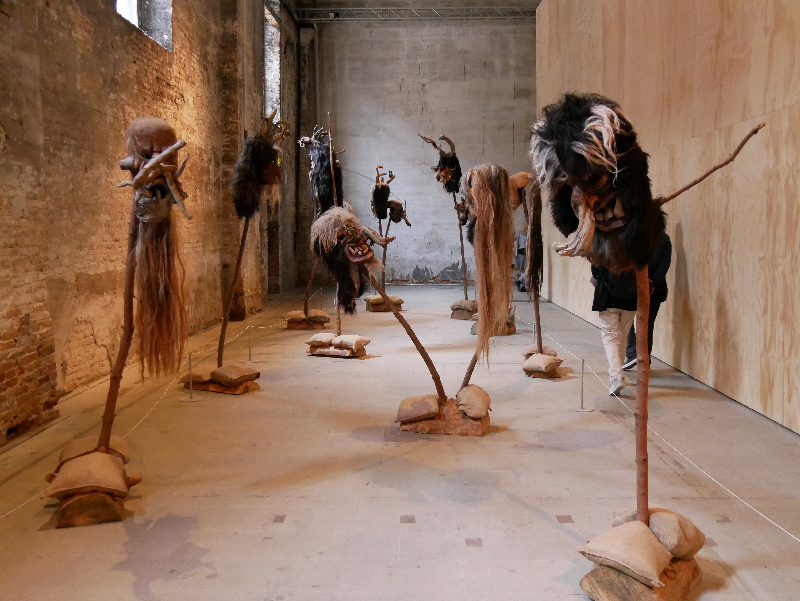
Mari Katayama “Dolls and Boxes”
Mari Katayama´s photographic work feature herself, surrounded by things she has made or collected. Using her body as one of her materials, she also creates highly decorated hand-sewn body doubles replicating her unique physique. Born with a rare disorder that affect the shin bones, she choose to have her legs amputated when she was 9 years old. Her yearning to wear glamorous clothes is recalled in her photographs.
Her work was much discussed among visitors who realized with shock and horror that her suffering is daily reality, transformed into art
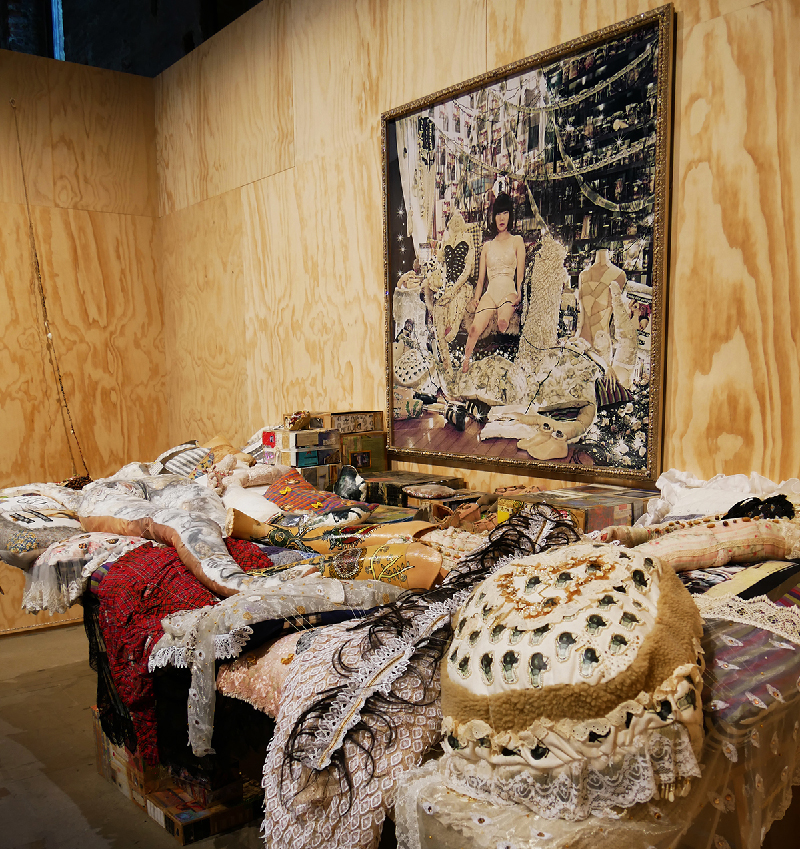
Christine and Margaret Windheim: Installations “Bleached Reef”, 2005 . 2016 and “Toxic Reef” 2007 – 2019. This work again chosen by the curator, is rather old and has been shown already all over the world! Why show it in Venice, it made no sense to me!
The Crochet Coral Reef sits somewhere between sculpture and botanical, biological model. In this project – involving thousands of collaborators – the forms are made in crochet: Yarn, thread, electro luminescent wire, old video-tape, beads combined to make a series of coral reefs.These reefs are dying, bleached of colour, due to rising water temperatures. As oceanic plastic trash accumulates, their forms are replaced with another kind of toxic accretion.
Christine and Margaret Windheim have founded “The Instute for Figuring” to promote the Crochet Coral Reef, that is seen as an art – science project.
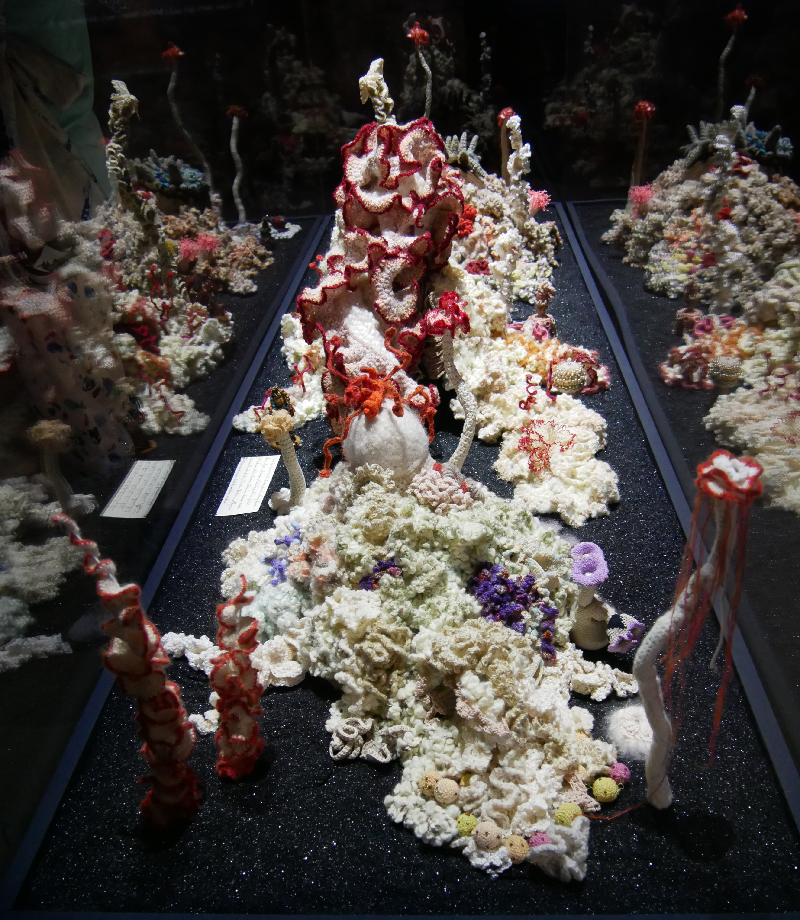
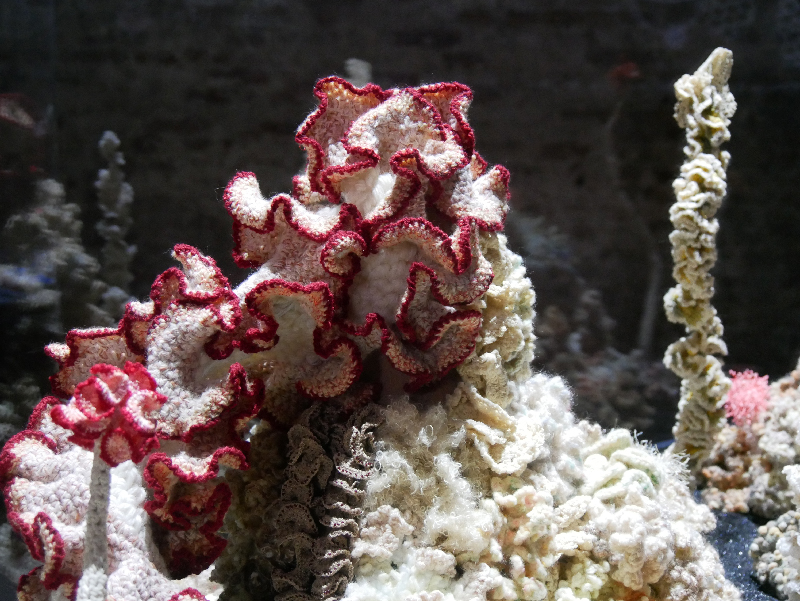
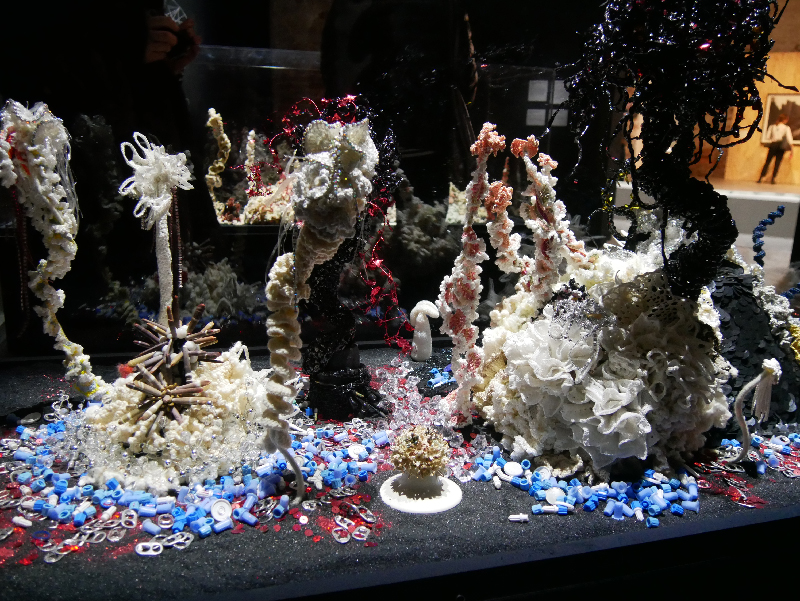
Kemang Wa Lehulere/ South Africa: “Dead Eye”, Installation of shadows meant as a memorial and shrine. The small dics hanging from the ceiling are extracted doorways from the many bird boxes he has used . For him the ´bird box represents home, and the displacement that many South Africans suffered under apartheid. I liked this work very much, it had a playful and poetic quality in spite of the theme it represents!
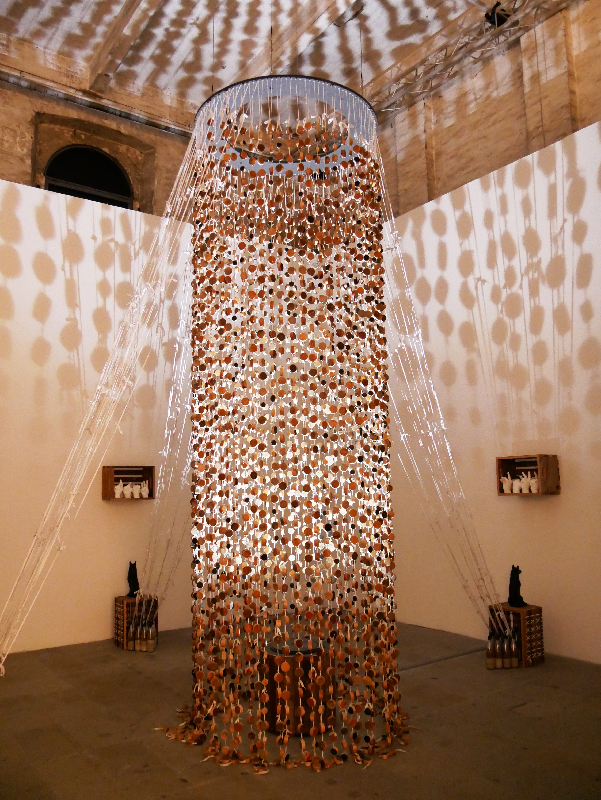
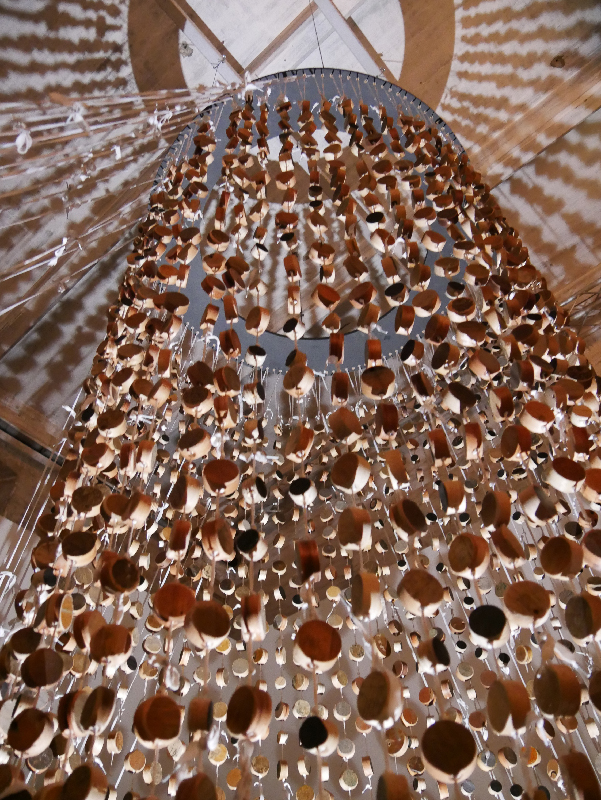
Ulrike Müller: “Rug”, handwoven tapestry excecuted by Jerónimo and Josefina Hernandez Ruiz, Mexico. This artist works with various materials and techniques: including enemal, printmaking and weaving. Her rugs, in which she embraces craft traditions typically considered “low”, is said to add to her critique of the hierarchies within fine art. The motif refers to Andy Warhol´s shoe drawings. Why did the curator not suggest a tapestry artist from the new tapestry movement, who weaves herself ? Anyway the names of the weavers are mentioned this time
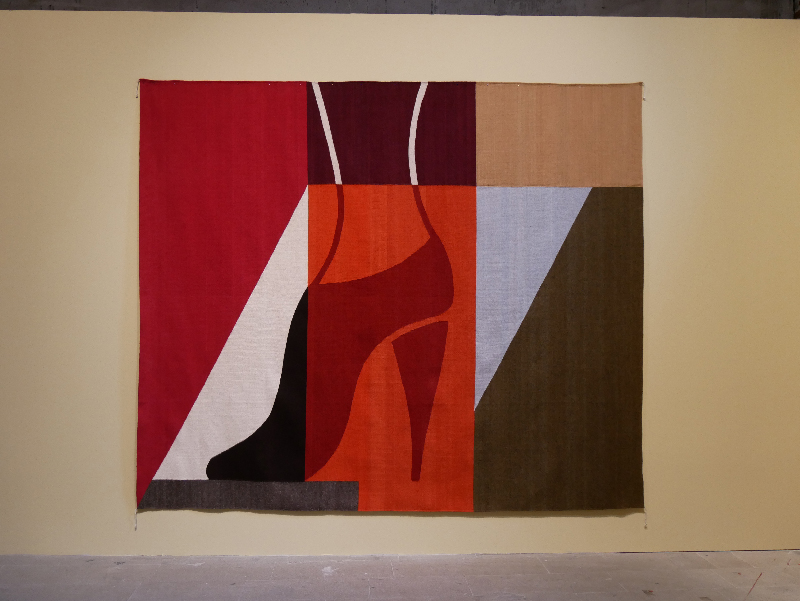
Carol Bove/Switzerland: Sculpture “Nike III”, 2019 and “Ariel” 2017, stainless steel and urethane paint. The surface colour (urethane paint) promotes the illusion that her steel tubes are constructed from a soft, malleable substance. Surprisingly these sculptures made a very textile impression and one had to touch it to feel that it was not! Bove has called these works “collage sculptures”
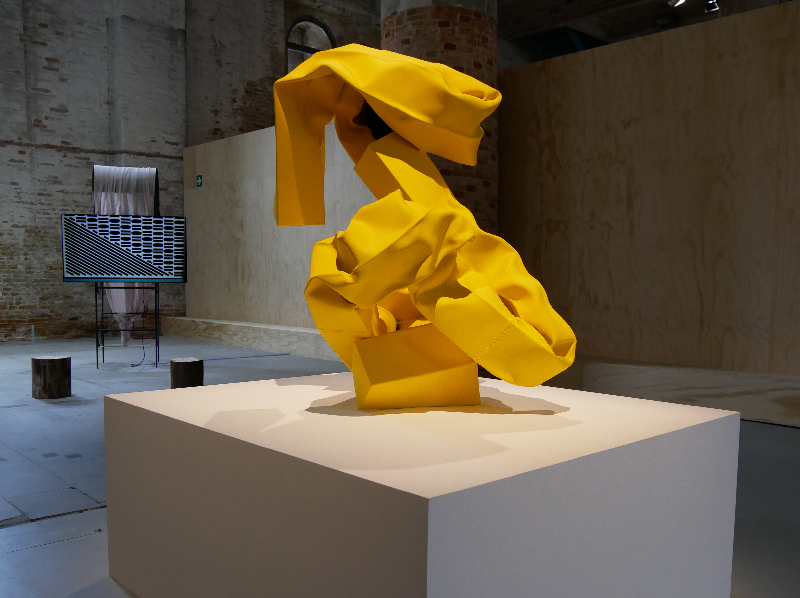
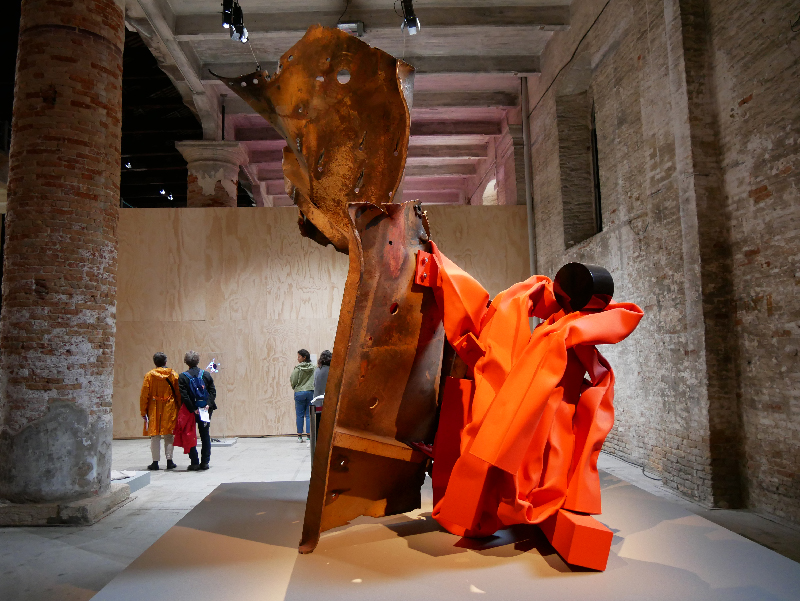
Anicka Yi: “Biologizing the machine”, 2019
In this work biomorphic sculptures hang from the ceiling, conjuring up images of amorphous organism: cancerous growth, insect eggs, human organs.The craters of liquid below are bringing to mind futher associations with body fluids, contamination and disease. But as a total installation it also made an esthetic impression that was just beautifully placed between the old arsenale stone walls!
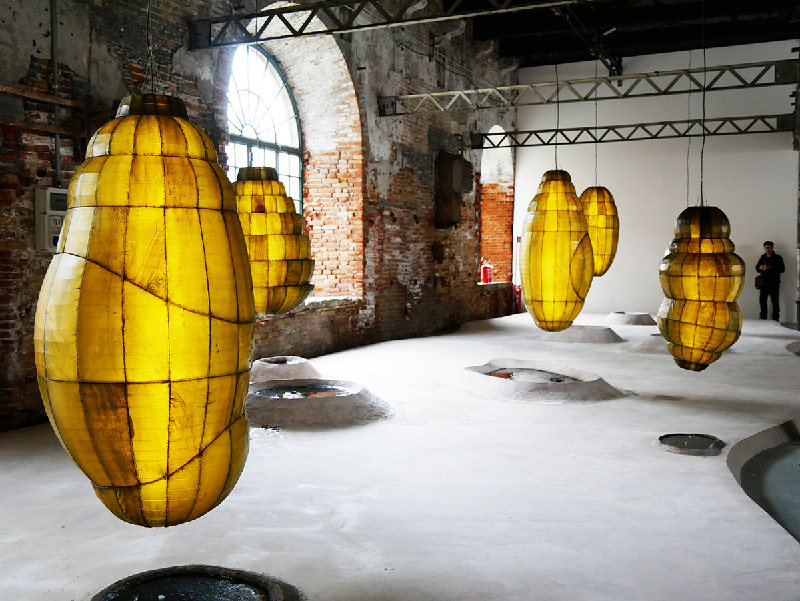
El Anatsui: Wallhangings “Opening of Time, 2019 and “Earth Shedding his Skin” 2019 (yellow); made from bottle caps and copper wire. Again works by my favourite artis from Ghana, this time continuing with great themes. His work is very plyable and textile-related, his sketches look like made by a large-scale patchwork artist!
I had seen his work this Spring in the impressive halls of the Haus der Kunst in Munich and am hooked ever since. Unfortunately the works in Venice were a bit to large for the space but impressive nevertheless
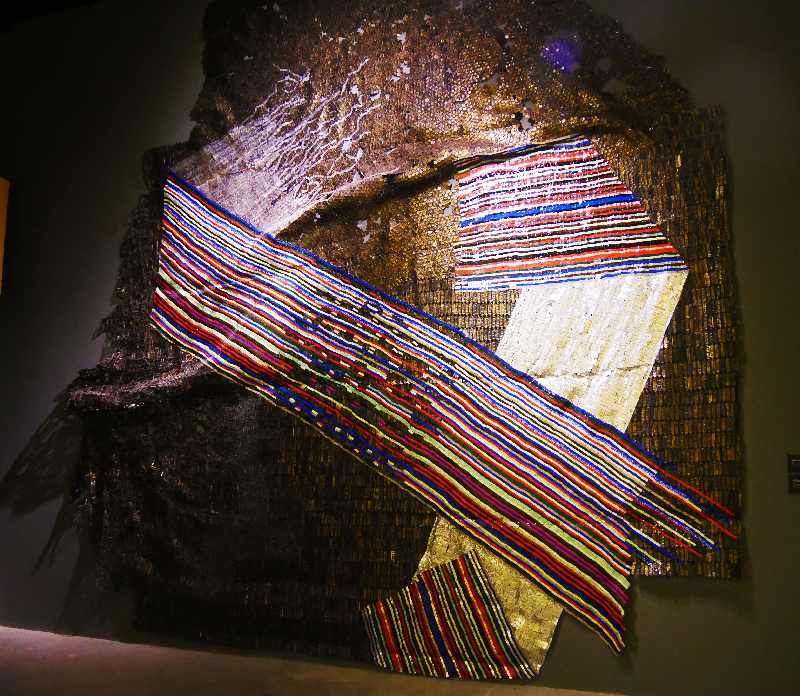
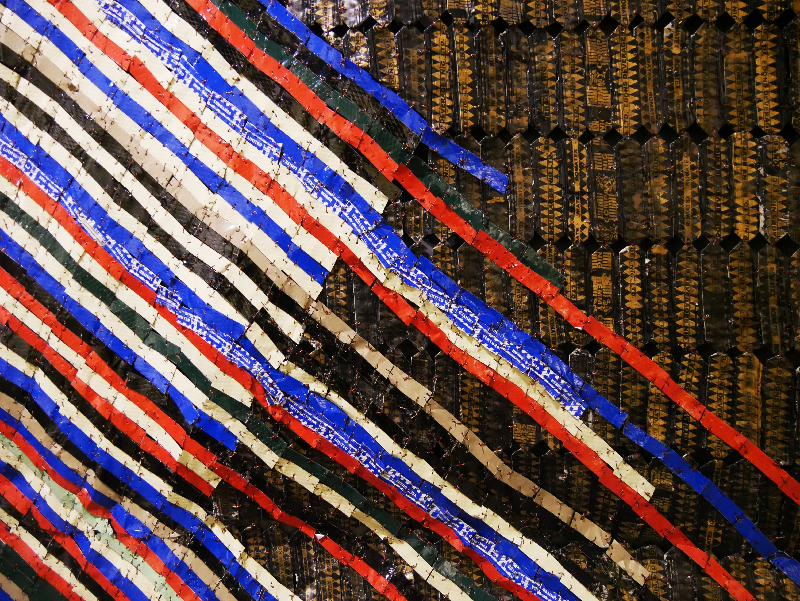
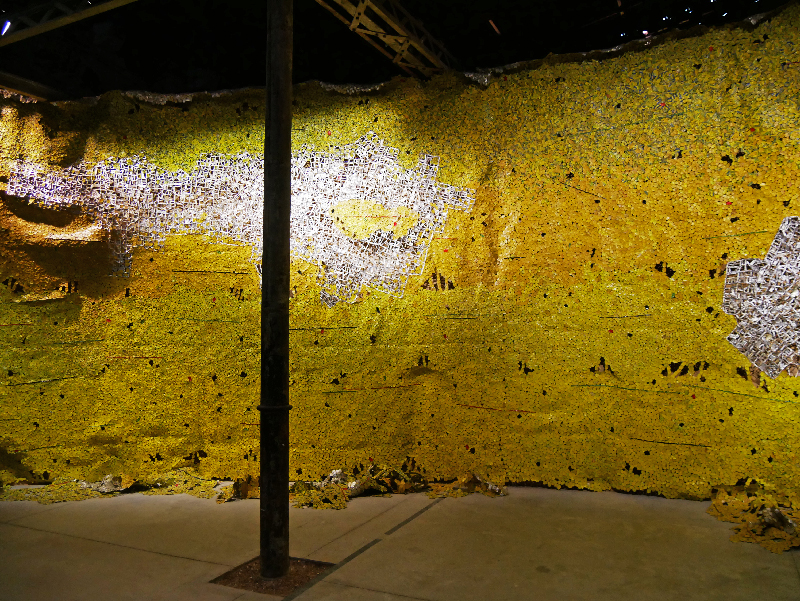
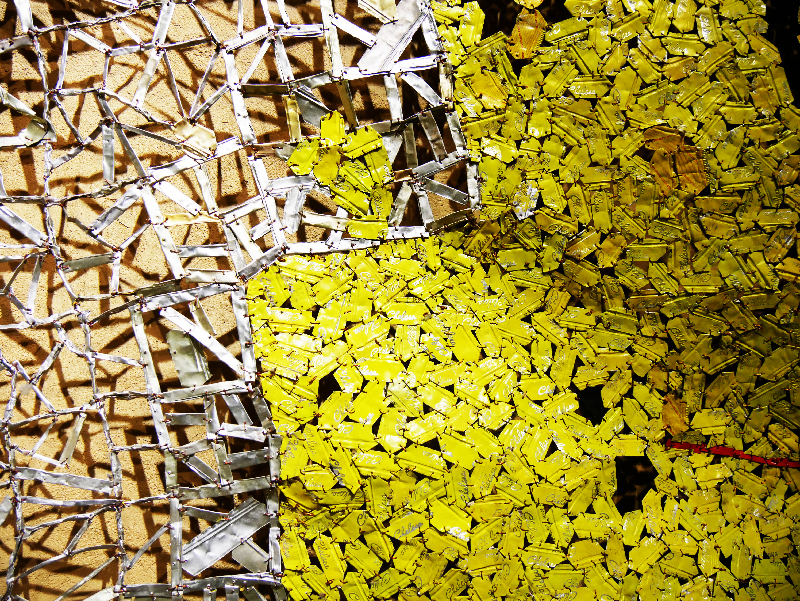
Alexandra Bircken: Wallhanging “Angie”; Here a detail of the material which is made with stiffened glue and some embroidery. Further “Snoopy- motorcycle suit” and the installation “Eskalation” with one part out of 40 costumes.
Her works interweave themes of gender, power and vulnerability, body and machine and recall our fragility, our physicality, and the tools we create to protect ourselves. I was impressed by her works, had already seen some in Germany and would like to see much more!
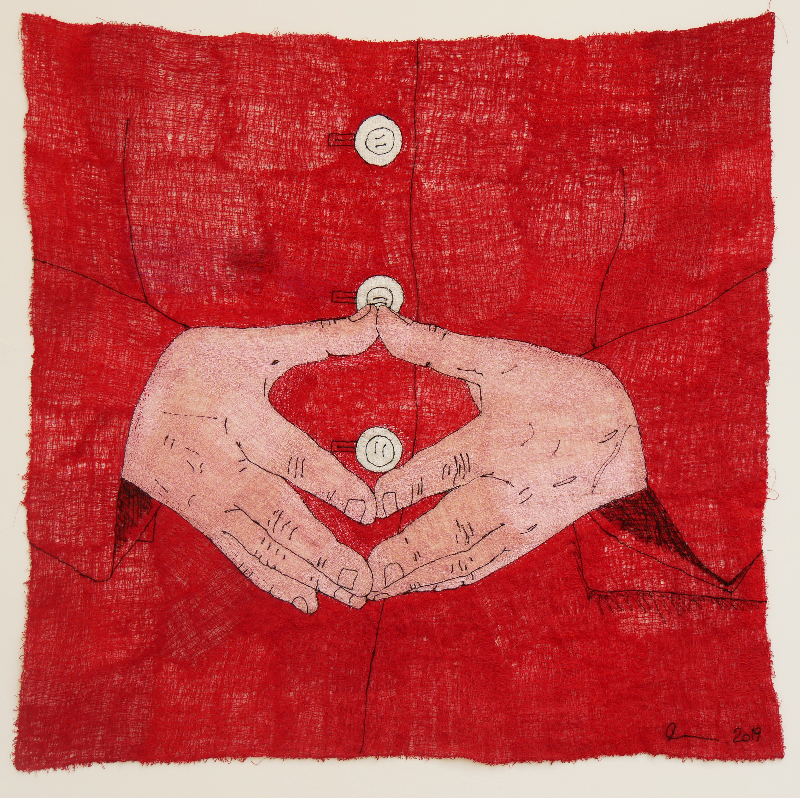
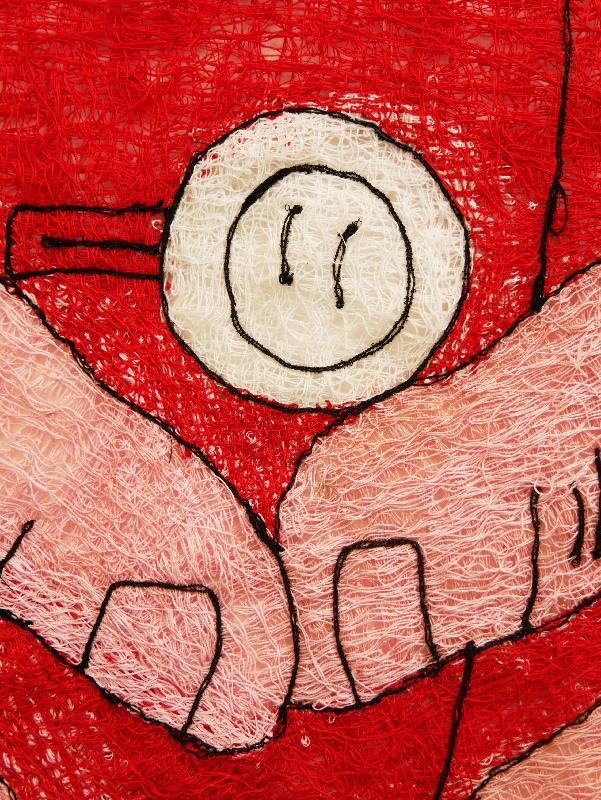
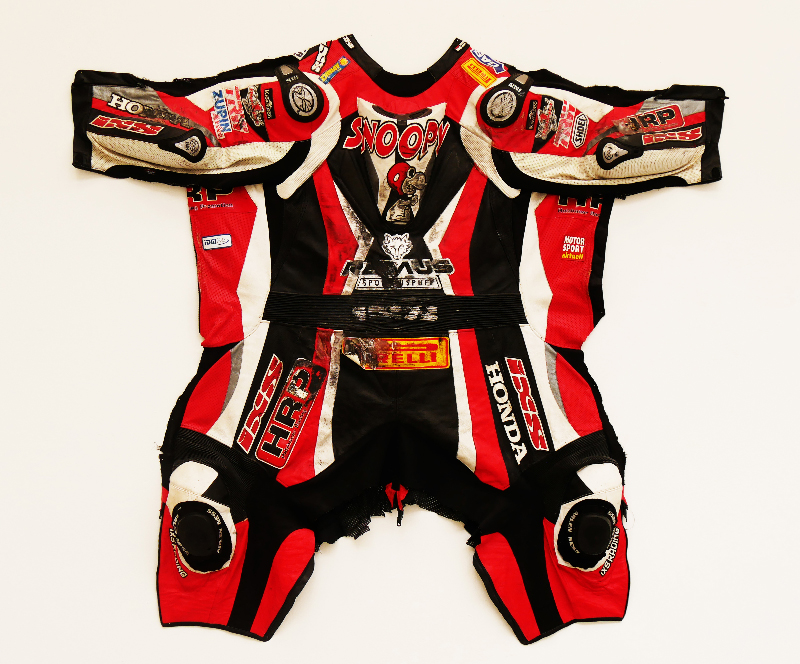
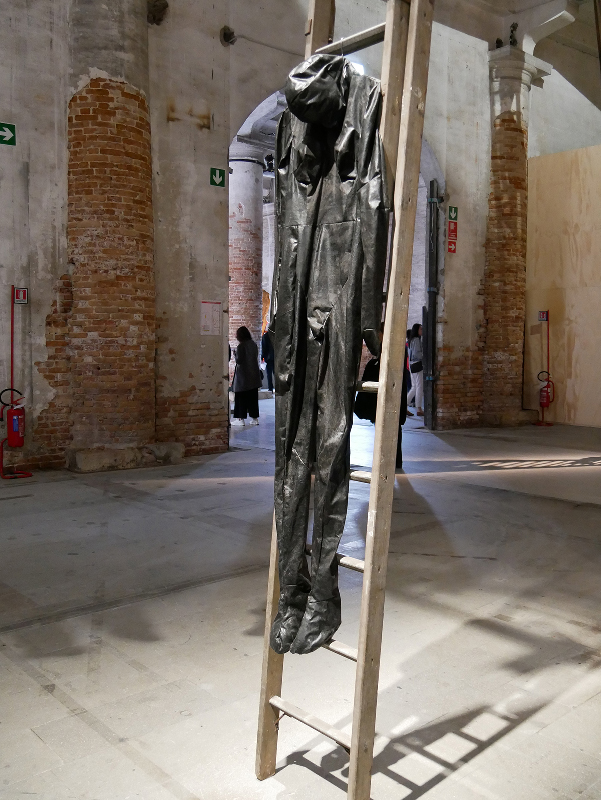
Daiga Grantina “Saules Suns”, Latvia Pavilion
Daiga Grantina uses a wide range of everyday materials, from the synthetic to the organic, often inverting and trespassing beyond the limits of their traditional uses. She bends metal into spirals, casts light into shadow, fluffs cotton into fuchsia purple blossoms. I liked the playfullnes and lightness of her work
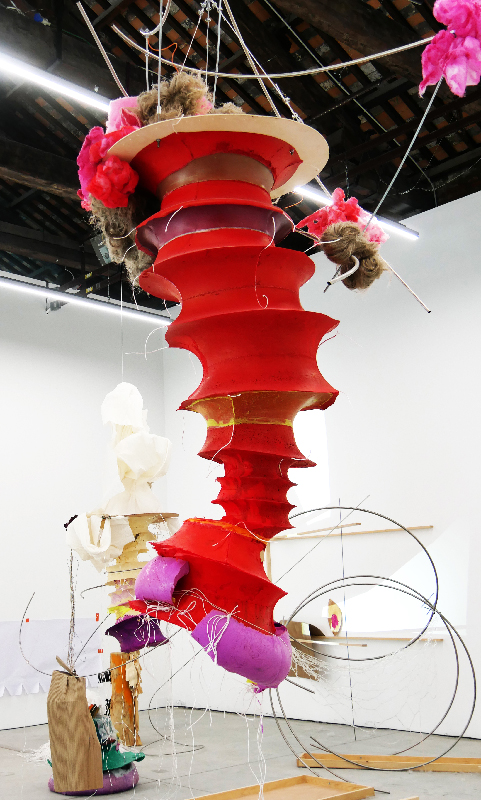
Gabriel López, Pavilion of Venezuela.
Except for the artists name I do not have much information on this work, that was referring to Venezuelan folk traditions.
The text to this work read ” “The imprint of the ancestral cosmogonies has given our word a magical quality that establishes a hinge of thought between fantastic tangible and cultural identity”
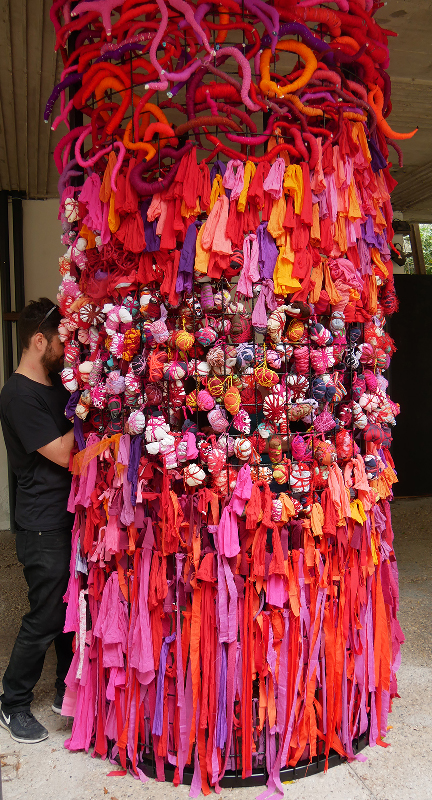
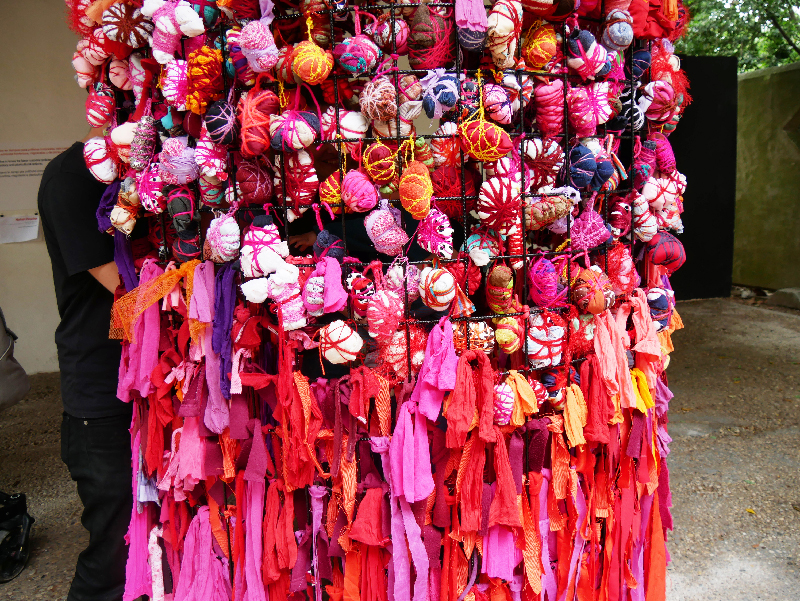
Raffy Nappay: “Eternal Sanctum”, Pavilion of the Philipines, wool, thread, paint on fabric. He says about his work:
“I am using the needle as a brush, thread string and rope as my paint and palette, and fabric as my canvas. I find the three dimensionality of the material to be far more tactile, versatile and satisfying to influence and manipulate than the brush. I use a medley of paint and applique over printed fabrics, I knot and tie, sew and weave yarn into nests. I don´t view my work as mere contemporary tapestry- it is far more sculptural, inviting and multilayered”.
I have not seen this work myself, but I am happy to be able to show photos of it!
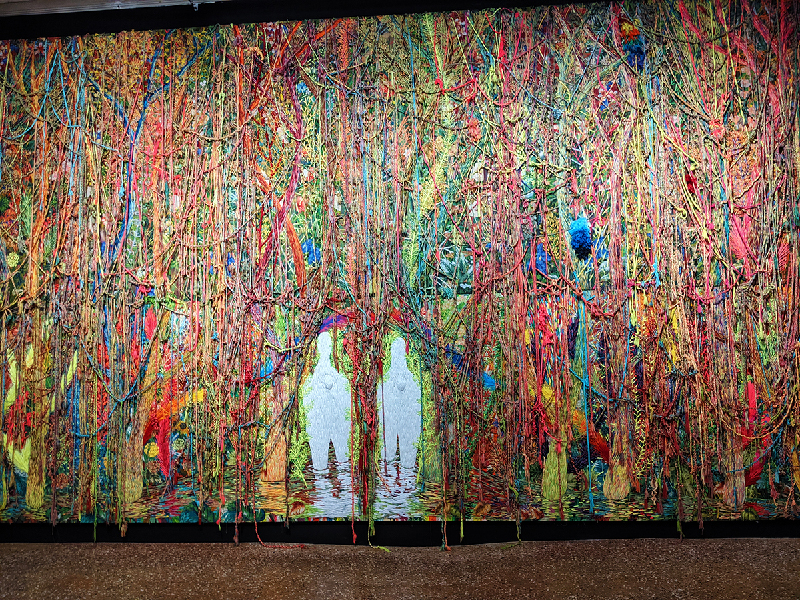
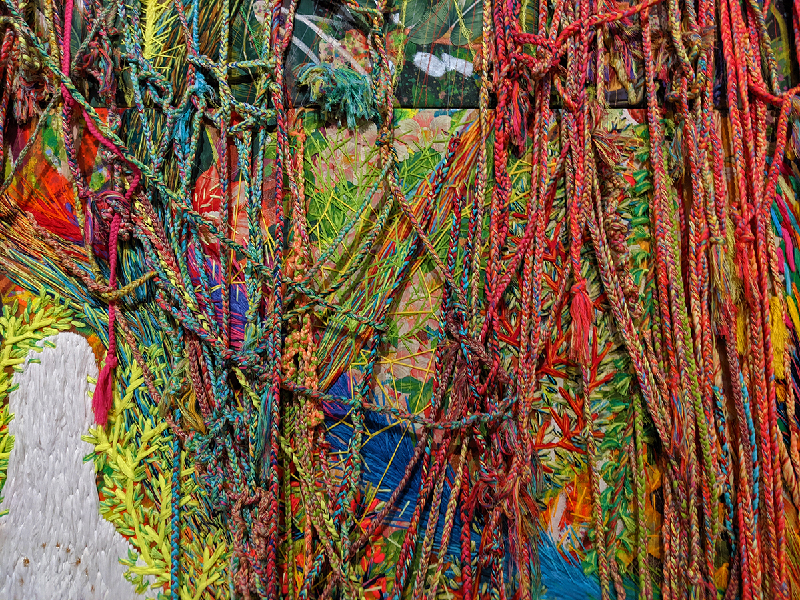
Bianca Severijns (Dutch, living in Israel):”Protective Blanket Series”, hand-torn paper , acrylic, thread, textile; From the exhibition “Personal Structures” at Palazzo Mora; GAA Foundation Pavilion, Venice Biennial. The GAA Foundation is a non-profit organization that aimed to heighten the awareness about the more philosophical themes in contemporary art, in particular: Time – Space – Existence.
I found this work very impressive and was surprised never to have heard about this Dutch artist!
The artist says about her work:”The first blanket of the Protective Blanket Series is resembling an animal hide, this artwork takes the viewer back to prehistoric past, when protective blankets were created for survival. Challenging the physical caracteristics of paper and its limits, I created my first Protective Blanket as totally movable, supple, yet durable art piece”
